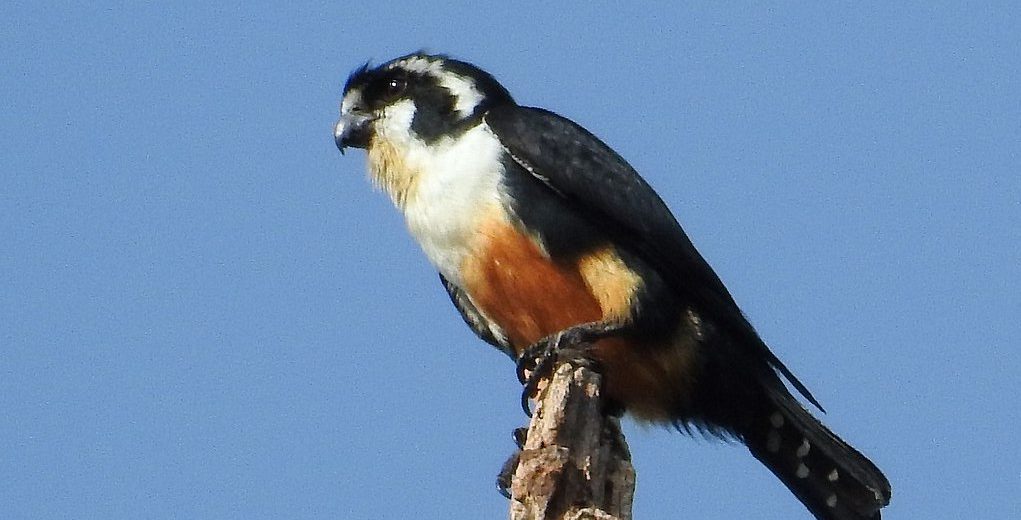
The black-thighed falconet can be found throughout Brunei Darussalam, Indonesia, Malaysia, Myanmar, Singapore, Sri Lanka, and Thailand. They prefer forests, forest edges, and wooded open areas. Their populations are stable across their range. Sans habitat destruction, there are not many threats these birds face. Plus, they’re able to tolerate habitat destruction better than some other raptors. Thus, they are listed as Least Concern by the IUCN.
First the Stats…
Scientific name: Microhierax fringillarius
Weight: Up to 1.94 ounce
Length: Up to 6.3 inches
Wingspan: Up to 13.38 inches
Lifespan: Estimated up to 15 years
Now on to the Facts!
1.) These birds tend to dwell at elevations of under 5,000 feet.
2.) They can also be found near and in villages and near active slash-and-burn forest clearances.
3.) While primarily feeding on moths, dragonflies, butterflies, alate termites and cicadas, they will also take the occasional small bird and lizard.
4.) Black-thighed falconets are typically social feeders, gathering into groups of up to 10 individuals.
5.) Many of their prey items are taken on the wing (in mid flight).
But wait, there’s more on the black-thighed falconet!
6.) Based on their locale, these birds can breed from February – June or November – December.
7.) They build their nest within nest holes of barbets and sometimes abandoned woodpecker holes.
Did you know…?
These tiny raptors produce a shrill, squealing “kweer” sound, but they can also make a fast-repeated “kli-kli-kli-kli” or “killi-killi-killi” sound.
8.) Females lay up to 5 eggs.
9.) Incubation and fledging periods are not recorded as of yet.
10.) Their numbers are uncertain, but estimated in the tens of thousands.
Now a Short Black-Thighed Falconet Video!
Be sure to share & comment below! Also, check out the Critter Science YouTube channel. Videos added regularly!
Want to suggest a critter for me to write about? Let me know here.
Think you know a lot about critters? Try your hand at these fun, free quizzes:
Photo credit: anukma



